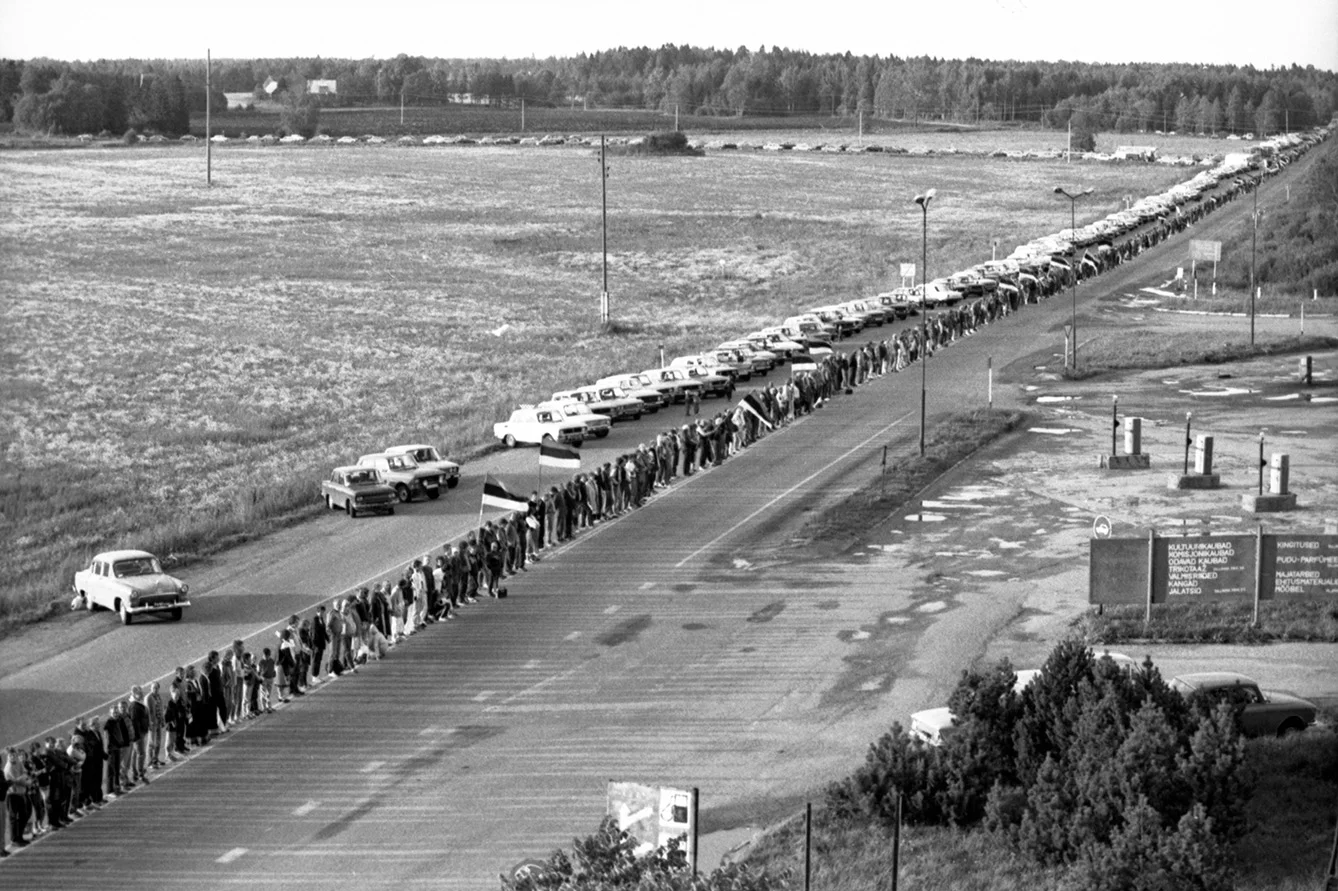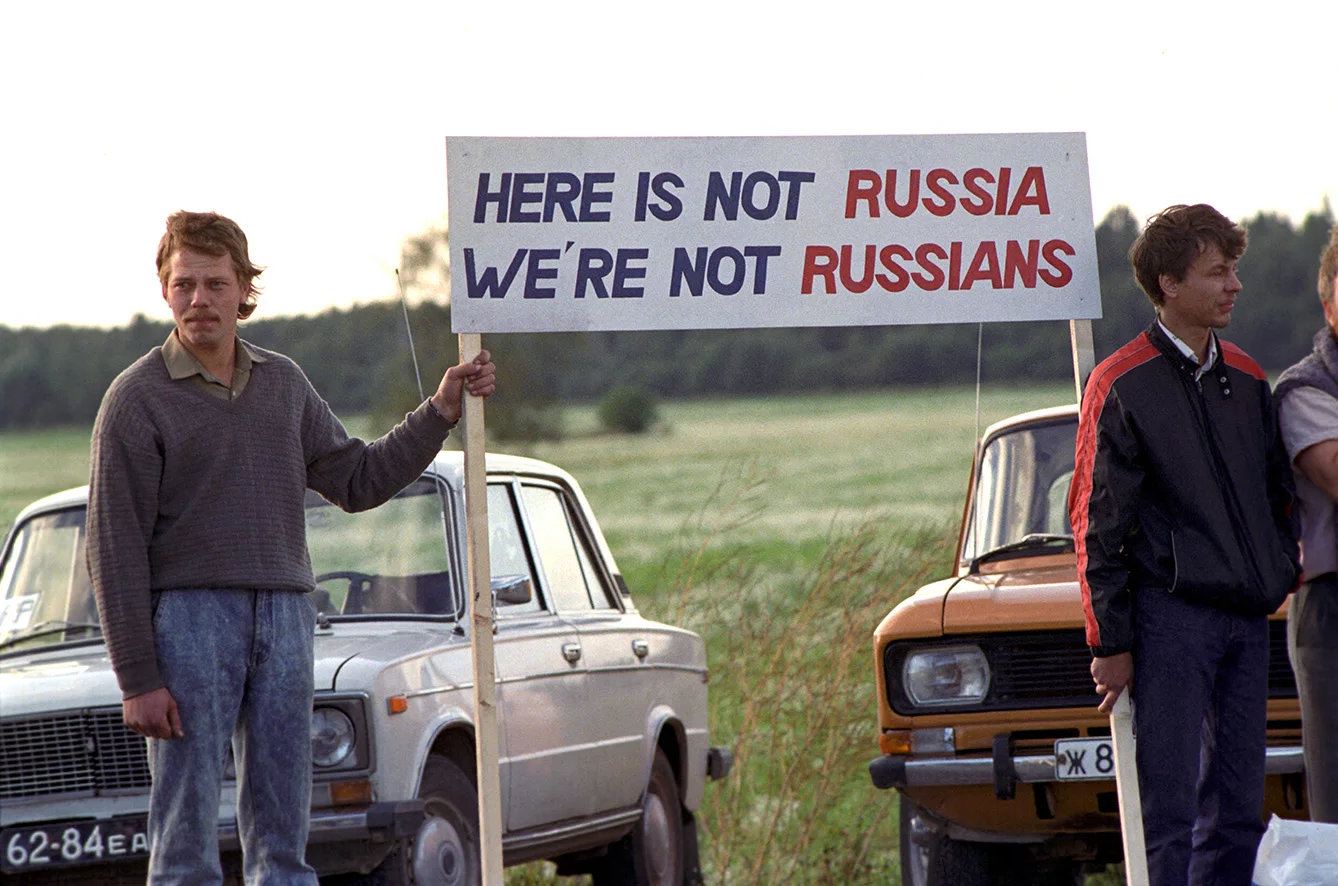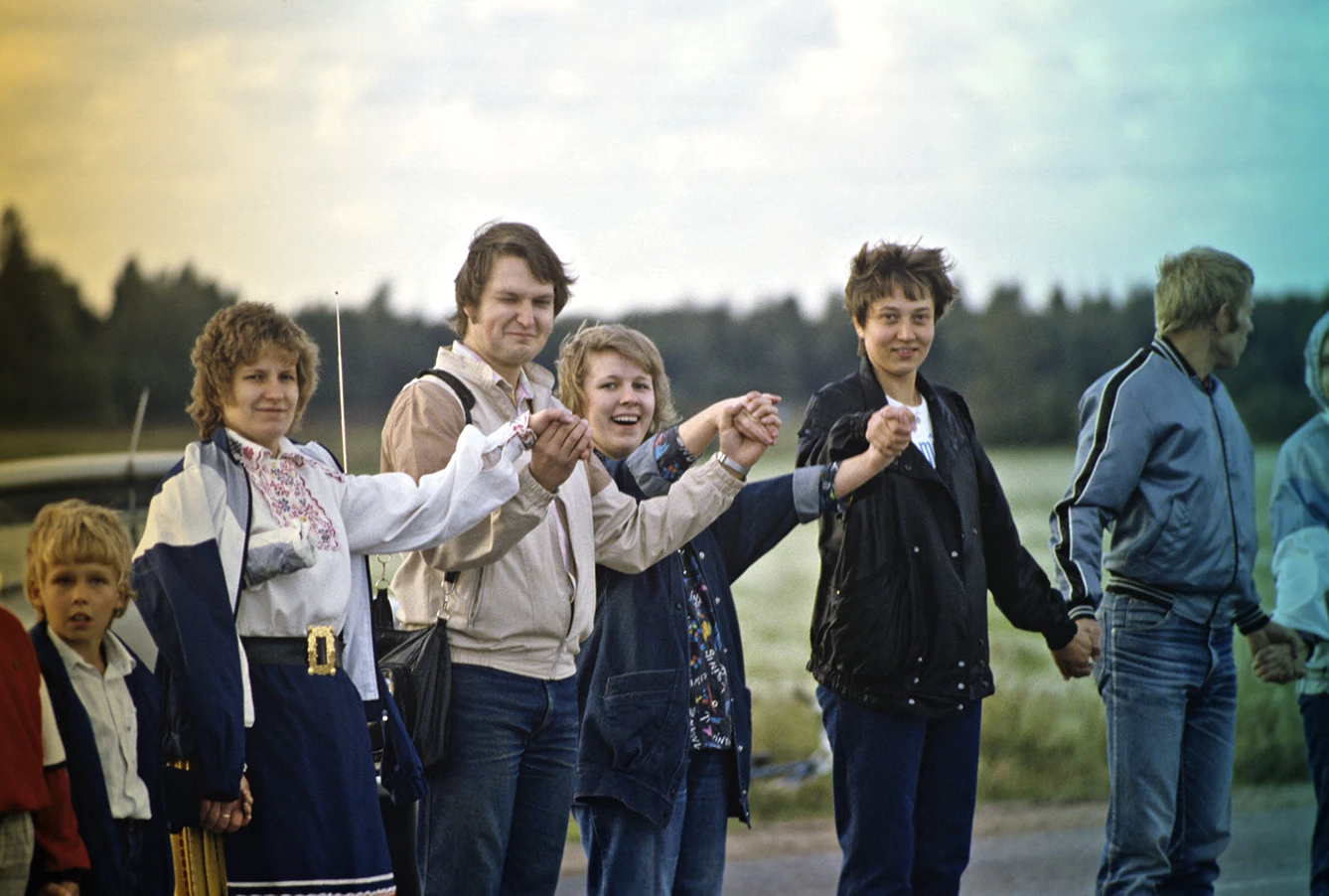In the current political turmoil, it’s worth remembering that the debate on the status of former constituent republics of the Soviet Union is much older. In 1989 the Baltic Way was an important voice in the debate, expressed by some two million people holding hands, forming a 675.5-kilometer-long human chain.
Holding hands against Molotov-Ribbentrop pact
The demonstration took place on a hot summer day on 23 August 1989. The date was no accident, as it was the 50th anniversary of the signing of the Molotov-Ribbentrop pact, the agreement between the Soviet Union and Nazi Germany that sealed the division of Central Europe between the two forces. Although the document was intended to be a strategic step on Hitler’s side, the Second World War ended with Soviet influence remaining in place.
In the 1980s, as the Soviet Union crumbled, there was the idea that dismissing the Molotov-Ribbentrop Pact as unlawful would undermine the legitimacy of Soviet rule in Central Europe. Before the anniversary, Lithuanian politician and activist Romualdas Ozolas started collecting 2 million signatures with the demand to withdraw Soviet forces from Lithuania. Mass protests began (in Estonia, they also took a form of the Singing Revolution), and some communist countries declared support for officials against the protesters.


Tensions rose even further as Moscow made some modest concessions, putting it on the defensive and adding fuel to the opposition. Then, on the eve of the anniversary of the Molotov-Ribbentrop Pact, the Supreme Council of the Lithuanian SSR ruled that the country’s incorporation into the USSR – which was strictly based on the Pact – was illegal. This was the first time in history that a member country had effectively declared its inclusion in the Soviet Union illegitimate.
Baltic Way: a different form of revolution
But no matter the spontaneity, a demonstration this significant wouldn’t have happened without meticulous planning. The organizers designated meeting points along the planned route. Buses were even provided for those without cars so they could get in line.
As the event took place on a Wednesday, Estonia declared the day holiday, and some employers in Lithuania and Latvia even facilitated taking part in the demonstration. (Some, on the other side, didn’t even allow a work absence.) Radio broadcasts also helped the chain become a reality, as they reported updates on the status so that people could find the right spot to join.
Eventually, the Baltic Way, consisting of two million people, connected the capitals of three Baltic countries: Tallinn, Riga, and Vilnius, along the A2 road. Riots sparked in other places, such as Russian Moscow, Moldova, and Bonn in West Germany, in front of the Soviet embassy.
It was calculated that making the Baltic Way a continuous human chain required 200 thousand people in each country. Three times as many people showed up, and the human chain became a symbol of unity and solidarity that was impossible to overlook. Consequently, two years later, the Soviet Union was no more.







